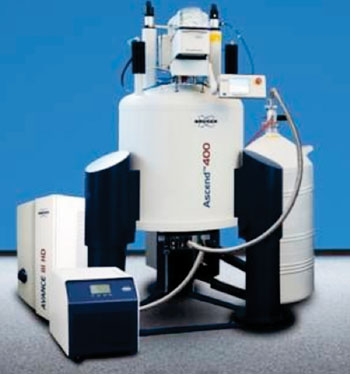Four New Biomarkers Identified for Cardiovascular Risk
By LabMedica International staff writers
Posted on 29 Jan 2015
A blood screening technology has uncovered four new biomarkers that improve the prediction of the risk for heart attack or stroke within the next 15 years. Posted on 29 Jan 2015
The blood profiling technique may eventually help doctors to identify those people who would benefit the most from early treatment and high-throughput profiling of circulating metabolites may improve cardiovascular risk prediction over established risk factors.

Image: A Nuclear Magnetic Resonance (NMR) spectrometer (Photo courtesy of Bruker).
An international team of scientists led by those at the University of Oulu (Finland) screened blood samples of 13,441 apparently healthy people from Finland and the UK for 68 biological markers. The health status of these volunteers was followed for over a decade. The team looked for measures in the blood that could reflect a heart attack or a stroke within the following years. Four biomarkers were indicative of future cardiovascular disease risk independently of known risk factors.
The team used a method based on Nuclear Magnetic Resonance (NMR) spectroscopy (Bruker, Billerica, MA, USA) which enables determination of over 200 biomarkers for body metabolism from a single blood sample. The technique is now being used for metabolic screening in large population studies and biobanks across Europe. All metabolites were measured in a single experimental setup, which allows for the simultaneous quantification of both routine lipids, total lipid concentrations of 14 lipoprotein subclasses, fatty acid composition such as monounsaturated (MUFA) and polyunsaturated fatty acids (PUFA), various glycolysis precursors, ketone bodies and amino acids in absolute concentration units. A subset of 679 serum samples from the study were additionally profiled with liquid-chromatography mass spectrometry (LC-MS) using the Metabolon platform (Durham, NC, USA).
The biomarkers for future cardiovascular disease were phenylalanine, a common amino acid, and the amount of monounsaturated fat in the blood; higher concentrations were linked with higher disease risk. These two biomarkers were as strong predictors of future heart disease as the measures of bad cholesterol or blood pressure. In addition, higher blood levels of both omega-3 and omega-6 fatty acids were linked with lower risk for cardiovascular disease. All these molecules are normally present in everyone’s blood, but it is the amount of these molecules that was shown to be reflecting the cardiovascular health.
Peter Würtz, PhD, the lead author, said, “These new biomarkers can help to better assess the complex molecular processes behind the development of cardiovascular disease. The improved prediction of cardiovascular risk also suggests cost savings in healthcare by advanced biomarker profiling. The low-cost blood screening technology opens a treasure trove to understand the molecular mechanisms of heart disease and other metabolic diseases.” The study was published on January 8, 2015, in the journal Circulation.
Related Links:
University of Oulu
Bruker
Metabolon













